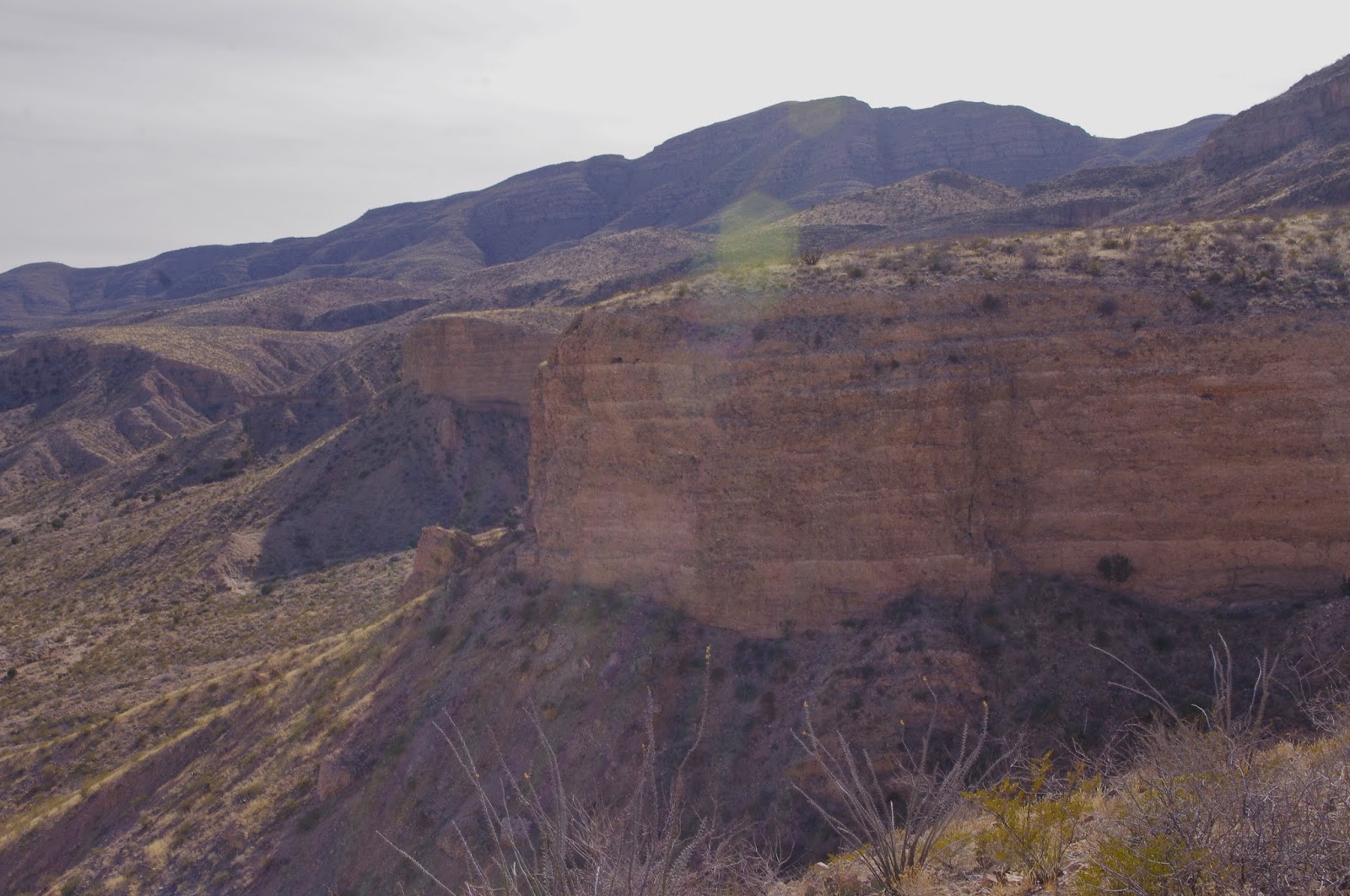Organ Mountains-Desert Peaks National Monument - Pine Canyon Revisited, Sierra de las Uvas
Ten years later I did a hike to the plateau between Sugarloaf Peak and Magdalena Peak( Sierra de las Uvas post in this blog) and looked down into the canyon and the yearning was still there. Let me say right now that I don't recommend the route I took back then of going straight up Choases Canyon from the tank, and if I had known that was the plan of my companions this past Sunday,( 1/26/14) I would have suggested something else. Also, I must let it be known that had I known that the hike hinged on my indistinct undocumented recollection of a dozen years ago about some petroglyphs in Pine Canyon- I would have suggested an alternate plan. But it seemed we were all up for some adventure, so maybe in the end , it didn't really matter.
The trudge up Choases was as I remember- rough. Arriving at Kerr Tank via a very old road on the other side of the ridge, I walked south up to the plateau on the good cow trail from the tank, noticing that it had shoe prints on it this time. The others explored up Kerr Canyon. I had done a reasonably thorough job of this 3 years ago and was not interested. On top of the mesa we all looked across Pine Canyon with its several winding tendrils at the head that coalesce to form the main stream bed. The branches begin in a confined circle in the steepest part of the mountain range and the rest of the canyon is remarkable because it is so singular, despite its size,with only a couple of short side canyons on the north side in these upper regions, and with Green Tree Canyon its main larger tributary coming in much further down along with a couple of smaller ones on the south side. In this way it is very different from the massive Broad Canyon system which dominates the east side of the Uvas.Be forewarned if you go: there is no good way down to the bottom from here. We thought about not going down, but only briefly before we split into two groups and proceeded via different routes. Both were slow and treacherous. I found a fragment of an old milk bottle on the way down- how it got there I'm sure is an interesting story that I'll never know. We proceeded farther down to a well. I wanted to check the first of the two northern side canyons thinking it had familiar look and some potential for holding rock art. We were on our way when in short time we rousted a family of javelinas. I leashed Seamus the Scotttie. We waited a while and I kept scanning distant boulders for petroglyphs but saw nothing. A very small, very small javelina could be heard the entire time, and finally made an appearance. It was ridiculously cute and we all felt pangs from putting it off of its mother who had run up the opposite bank. Not wanting to risk an encounter with the adult javelinas, we knew that further exploration would have to wait.We turned and made our way very steeply back to the mesa top. We found several items of interest on the way back that we had walked right by earlier.
We split into two groups again: one going around the mountain using the road from Kerr Tank, the other retracing our steps over the ridge and down Choases. We arrived nearly at the same time back at the truck. It had been a long, sun burned winter day. Yes, we had been in the canyon, but it didn't seem like it, we hadn't found the rock art and I began to believe I was mistaken and yet I couldn't be sure for even if I had been, the place was practically pulsating with it's beckoning and we had barely scratched the surface of its mystery. How and when we would return was anybody's guess.
Labels: hiking, Organ Mountains/Desert Peaks National Monument











































